Introduction to choi (Chinese greens)
The Chinese have one word that covers many different vegetables: ‘Choi’. On the whole, choi is not eaten as salad, like in western culture, but served cooked as part of stir fries or blanched and served either plain or with oyster sauce. In this article, we’ll have a look at some of the more common varieties of ‘Choi’, their flavour and cooking characteristics.
Pak Choi (Bok Choy)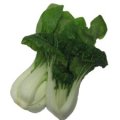
Pak choi is probably the most well-known choi as it may be found in the exotic foods section in many western supermarkets. The white stem (from which it gets its name; pak=white) is crunchy and sweet whilst the dark leaves are soft and slightly bitter.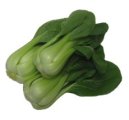 It is a very versatile choi and may be added to stir fries or steaming bowls of ramen or simply eaten on its own as a vegetable dish.There is also a green variety of pak choi which differs only in colour and a ‘baby pak choi’ which is much sweeter in taste and doesn’t need to be separated unlike the larger versions. These may be used interchangeably with the more common pak choi. Click here to see our recipe for a simply delicious pak choi dish.
It is a very versatile choi and may be added to stir fries or steaming bowls of ramen or simply eaten on its own as a vegetable dish.There is also a green variety of pak choi which differs only in colour and a ‘baby pak choi’ which is much sweeter in taste and doesn’t need to be separated unlike the larger versions. These may be used interchangeably with the more common pak choi. Click here to see our recipe for a simply delicious pak choi dish.
Choi Sum (Choy Sum)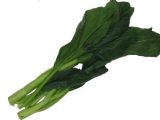
A relative to pak choi, choi sum has a similar sweet and crunchy stem albeit generally much slimmer. Its slimmer,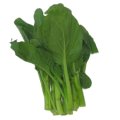 longer stems mean that it takes less cooking than pak choi and ‘baby’ varieties require even less time in the pan. Most simply, it may be boiled or steamed and served with a drizzle of oyster sauce and sesame oil, although it also suitable for chopping roughly and stir-frying. Generally, no par-cooking is required, unlike kai lan.
longer stems mean that it takes less cooking than pak choi and ‘baby’ varieties require even less time in the pan. Most simply, it may be boiled or steamed and served with a drizzle of oyster sauce and sesame oil, although it also suitable for chopping roughly and stir-frying. Generally, no par-cooking is required, unlike kai lan.
Kai Lan (Guy Lan)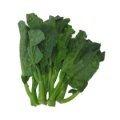
Kai lan is a broccoli-like vegetable with slimmer stems and a bitter-sweet taste. This is most typically complimented by simply stir frying with ginger. To keep the the stems crisp and to preserve the colour kai lan should be blanched briefly before being plunged into cold water to prevent overcooking. From there, all is required is to add to your stir fry and heat through. When cooked correctly, the stem should be firm and the leaves soft.
Kai Choi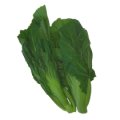
Kai choi is a leafy choi, with a firm stem running up the back of each leaf similar to cos or romaine lettuce. It has a bitter taste and it is most commonly used for making Chinese broth. The broth is typically made from a mixture of pork, dried shrimp and salted egg and is very popular as it is quick and easy to make.
Tau Miu
Tau miu (sweet pea shoot) is a leaf vegetable similar to spinach but sweeter. The small round leaves require very little cooking and may be sautéed briefly with garlic and/or oyster sauce and plenty of oil.
Oon Choi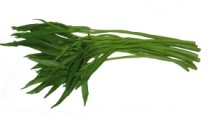
Oon choi (toong choi) is mainly popular in the Thai and Malaysian communities. It has a Long tube like stalk with very thin pointed leaves. When cooking, this vegetable will shrink down by up to half, so it is advisable to increase the quantity to account for this. The best way for this vegetable to be cooked is to stir fry with shrimp paste and a touch of chilli oil or fresh chillis to give it that extra kick.
Poh Choi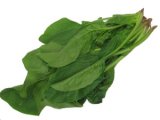
Poh choi is the Chinese eqivalent to spinach. It is generally used to make broth as it is believed to be very good for the complexion and general well-being.
Chinese Leaf (Napa Cabbage)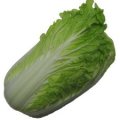
Chinese leaf is a crunchy, sweet choi that is generally used to form the base of stews and stock for ‘Steam Boat’. Its thick, succulent leaves can be used to make a very popular Korean dish, kim chi and it is often combined in a Chinese vegetarian dish combining it with ‘Lo Hon Chai’.
